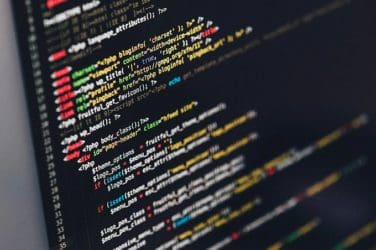words Al Woods
Linux has been around since the mid-1990s, reaching a user base spanning industries and continents. Nowadays, Linux is everywhere, from mobile phones to cars and appliances. But before it became a platform for running desktops and embedded systems, it was one of the most reliable and secure operating systems. If you’re curious, here’s what you need to know about Linux Operating Systems.

Why Use Linux?
Many of us are more familiar with the Windows Operating System when using the computer. However, that’s not the case for those in the IT sector. In fact, some of the world’s biggest companies depend on Linux since they find it more reliable, secure, and faster.
Another good thing about Linux is that it’s open source, which allows you to create an operating system out of a basic Linux operating system. Moreover, it’s pretty hard for malware to get into a Linux kernel, making it secure and reliable.
While the Linux learning curve can be tricky to navigate initially, the experience gained in working with Linux translates to all the vast platforms it supports. In fact, Linux is the basis for other operating systems, such as Android, since it does offer so much flexibility.
Another reason to use Linux is that the kernel is free and comes from the open-source GNU GPL, which allows you to add whatever you want to create a custom configuration. It’s possible to download just about every Linux distribution. For instance, you can download a form of Linux kernel with a few fully functional add-ons but without added cost.
How is it Used?
Every version of the Linux Operating System can manage hardware resources, handle applications, and offer some form of the user interface. The vast community of developers and numerous distributions have made Linux available for any task, and Linux has penetrated various computing areas.
For instance, Linux emerged as a popular OS for web servers such as Apache. It’s also the preferred choice for network operations and scientific computing tasks requiring huge compute clusters and mobile devices with OS versions like Android. You will find Linux in various settings since it can support numerous uses. For instance, it can support high-volume and multi-threading applications for different servers, from web servers to email and database servers.
Linux also works for embedded devices or systems requiring limited computing function, including household appliances and automotive entertainment systems. Software development is another function of Linux. Although several development tools use Windows and other operating systems, Linux is the most widely used OS for open-source software development.
Linux is highly configurable and relies on a modular design allowing users to customise different operating system versions. Users can also optimise it for various purposes like computation performance, network performance, and deployment on some hardware platforms.
Managing Processes
Linux can be tricky to use if it’s your first time. Thus, consider hiring Linux specialists to help you better understand the operating system and how to use it for your business. For instance, managing processes in Linux can be tricky. You could come across different commands as you navigate it.
Top and Ps are the two most common commands for process management in Linux. The top command will display a long list of real-time processes, including CPU usage and memory. Use your keyboard’s up and down arrow keys to browse the list. If you need to quit, press “q.” If you need to stop a process, highlight it using the up and down arrow keys, then press “k.”
Meanwhile, the Ps command means “Process Status.” When you activate this, it will display the processes currently running. But unlike the Top, Ps will not generate real-time output. While Ps will only display processes currently running, you can also use it to list the entire processes.
You can activate the kill command when you need to stop a process while using Linux. It will send a signal to the process to stop. You can send various other signals, but the most common is “kill-9,” while the default signal is 15.
What are File Permissions on Linux?
Although Linux is one of the most secure operating systems and has various security features, potential vulnerabilities can exist when local access is granted. The most common security breaches are file permission-based issues due to users not assigning the proper permissions to directories and files.
There are three types of permissions in Linux, read, write, and execute. “Read” is when you will read the file and list the directory, while “write” is when you write new files or modify existing directory files. Meanwhile, execute means to access and run the file.
The directory is similar to the folders in Windows. The chown and chmod commands are used to control access to the files. Chmod commands mean change mode, which allows the changing of files and folders, while chown means “change owner”. With chmod, certain users will have permission to read, write or execute directories and files.
Pros and Cons of Linux
Linux is a great operating system, offering many benefits. But it does come with disadvantages, too. Let’s look at its pros and cons.
Linux is highly secure and works really fast, two of its main advantages. Since it’s open source, many Linux developers worldwide lookout for potential vulnerabilities and threats to the operating system. When it comes to speed, Linux will not disappoint. Linux does not require the installation of anti-virus programs, so a big part of its memory remains unused, resulting in a faster speed.
So, what are the cons? One of its disadvantages is that it could take a while to learn. Linux can be tricky, especially if you are not used to it. The user experience is different with Linux, so it takes time to familiarise the system. In addition, several applications that use Apple OS or Windows do not function in Linux. If you need access to certain apps for work, you must first double-check if they will work with Linux.









